Pelee Island Plantapalooza a success!
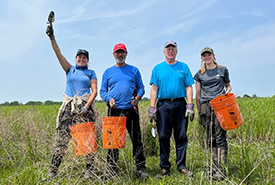
Conservation Volunteers at Plantapalooza. (Photo by Jill Crosthwaite/NCC staff)
This June’s Plantapalooza event marked the long-awaited final piece of wetland restoration efforts on Pelee Island. Dedicated Conservation Volunteers gathered at the Nature Conservancy of Canada’s (NCC’s) Florian Diamante Nature Reserve, where years of collaborative work has transformed an old farm field into a thriving wetland spanning 25 hectares.
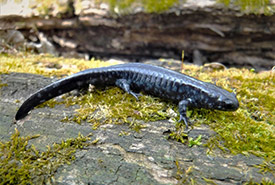
Small-mouthed salamander (Photo by Thomas Hossie)
Prior to being drained for agriculture in the 1800s, this area provided crucial habtat for many species. As the southernmost point in the country, Pelee Island is a steppingstone for migratory birds and a hub for biodiversity. It hosts many rare and at-risk species, including blue racer snakes and small-mouthed salamanders, both of which are not found elsewhere in Canada.
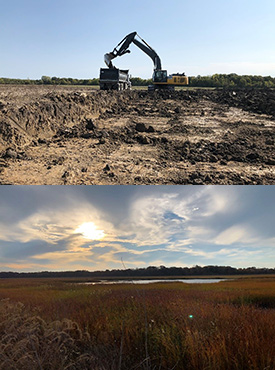
Before and after —- digging the wetland. (Photos by Jill Crosthwaite/NCC staff)
Conservation Volunteers planted close to 800 wetland plant plugs over the course of the day, helping to restore the ecosystem to its initial glory. Jill Crosthwaite, NCC’s conservation biology coordinator, stresses the importance of planting an array of native plants to sustain biodiversity: “We need a diverse group of plants to support insects, some of which require specific host plants. The more plant diversity we have, the steadier supply of insects we have, and all birds feed insects to their babies.”
As native plants have begun to re-populate the wetland, marsh-breeding birds have followed suit, and their calls are being heard after decades of silence. “It’s rewarding getting to see these direct measures of success and hearing feedback from locals.” Jill says of the re-emergence of wildlife. “One farmer told us that he hasn’t seen this many ducks on the island since the ‘70s.”
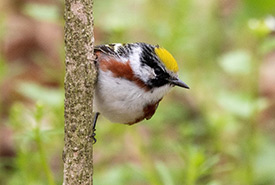
Chestnut-sided warbler on Pelee Island. (Photo by Mhairi McFarlane/NCC staff)
Birds are not the only species returning. With the guidance of researchers from Trent University, three ponds have been created on-site, tailored to the needs of small-mouthed salamanders. These endangered amphibians are re-establishing a flourishing population at the nature reserve, using the ponds to breed.
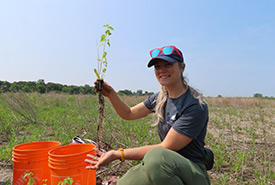
Jill at Plantapalooza (Photo by Jasmine Eagleden)
So, what’s next? While Plantapalooza concluded the restoration efforts on the island, our work is not over yet! It’s up to us to care for the wetland now, and to help with this, future volunteer events at Florian Diamante Nature Reserve will include activities like invasive species removal. Conserving the area will enable wildlife and people to enjoy it well into the future. To ensure people have a way to enjoy the space, NCC has constructed a 1.9-kilometre trail around the reserve. As well, there is an accessible wildlife blind near the road to allow visitors of all abilities to observe the many species that are already settling into their new habitat. With only 40 per cent of Ontario’s original wetlands remaining, now is the time to enjoy, protect and care for those we have left and continue restoring those that once were.



